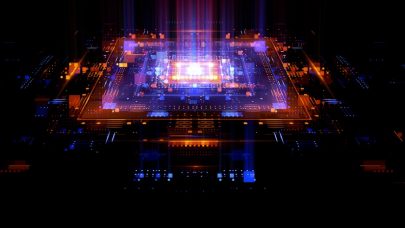The following is a blog post by Hannah Remmert.
Sept. 14 — Most of us in the United States likely feel safe from Ebola—West Africa feels like it’s worlds away. We’re located very far geographically from the countries with the highest frequency of infections, like Liberia, Sierra Leone, and Guinea, and many of us aren’t likely to be traveling to those places any time soon. But what about in the airports? Could you come into contact with someone who has contracted Ebola and find yourself infected?
Florida State University professor Ashok Srinivasan is researching a way to prevent that scenario from ever happening, or at least making sure that it is a lot less likely to occur with the help of the Blue Waters supercomputer.
When people travel via air, they inevitably come into contact with many people between standing in line for security, rushing to get in line to board their flight, and sitting close to many people during the flight itself. Thus, Srinivasan and his team, consisting of Sirish Namilae from Embry-Riddle Aeronautical University and Robert Pahle, Anuj Mubayi, and Matthew Scotch from Arizona State University, are evaluating airlines policies regarding flights, and if a change to these policies could have an effect on the likelihood of infection transmission.
“We’re looking at whether a change in procedures and policies related to air travel can reduce the likelihood of infection transmission in planes, because a lot of infections, for example SARS (severe acute respiratory syndrome), influenza, and so on, are spread through planes primarily. So we want to see if we can change the boarding procedure, how seating arrangements are made, the type of plane and so on, so that the likelihood of an epidemic is reduced,” explains Srinivasan.
What they’ve found is that changing the boarding procedure can significantly reduce the likelihood of infection transmission.
“The boarding procedure is often designed for efficiency. A lot of the procedures that are very good in terms of efficiency, that is, getting people into the seats very fast, are also very bad for disease transmission because they bring people close together. So policies that take a little longer to board the plane also tend to reduce the likelihood of infection transmission.”
This discovery could not have been possible without the help of Blue Waters. Srinivasan and his team were able to run 70,000 cores for each simulation, which would take about 20 minutes per core, or about 25,000 hours of computing, which would be over 1,000 days. And that’s for just one model. What they found was that their models needed refining. The original model of passenger movement was designed for evacuation, not the normal boarding and disembarkation behavior they needed. This required them to refine the original model a few times to get a more realistic simulation of human movement. Without Blue Waters, the time needed just to create the correct model would have taken many years.
And Srinivasan was happy about more than just the technological capacities of Blue Waters.
“Well, on the whole, the support team that came with Blue Waters was very useful. They supported and enabled us to appropriately scale our simulations, whereas with some of the other supercomputers, we didn’t have the service ecosystem that would allow us to do that, even if the hardware had resources available.”
The research Srinivasan and his team are doing is unique in that many of the other researchers studying Ebola are focused on the scientific understanding of the virus and its transmission, whereas Srinivasan is focusing on how the policies and procedures engrained in our society can affect transmission. When there are massive outbreaks of disease and infection, flights are affected. In late 2014, many people were pushing to ban flights from Ebola-infected areas. “By fine-tuning certain policies and procedures, we can avoid detrimental impacts not only to human health but to our economies.”
Source: Hannah Remmert, NCSA






























































